Merrie Albion was recently featured as the ‘Coffee Table Book’ of the week by The Independent newspaper (below) and also made Sean O’Hagan’s Top Photobooks list of 2017 in The Observer and Tim Clark’s round-up of Top 10 photobooks list on 1000 Words.
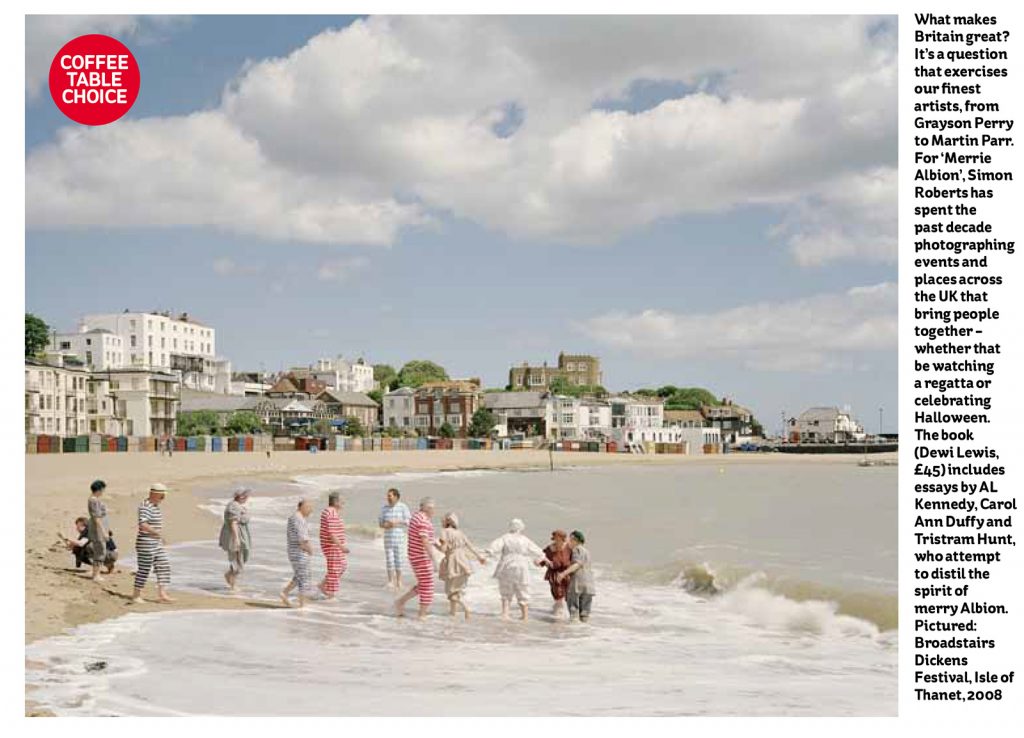
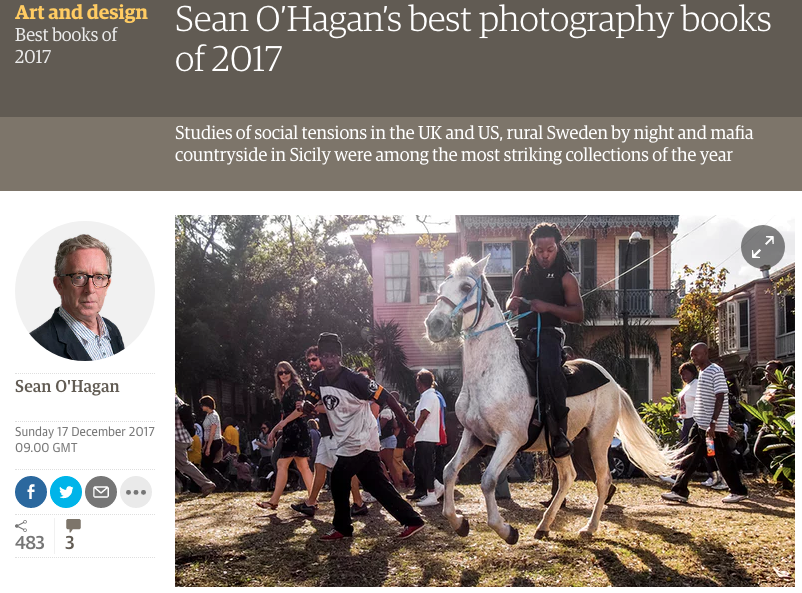
Sean O’Hagan writes:
“Anyone looking for a Christmas present for their Brexiter dad or Remainer mum should seek out Simon Roberts’s big and beautifully designed Merrie Albion: Landscape Studies of a Small Island (Dewi Lewis £45). A portrait of contemporary Britain, it presents the nation in all its complexity, from city traders to Muslim worshippers, while somehow evincing a sense of place that is palpable and oddly reassuring. Shot on a medium format camera, often from an elevated point of view, Roberts sometimes makes composites of the same scene, creating images that have the theatricality of one of his inspirations, William Powell Frith, the 19th-century painter of everyday English tableaux. A book that speaks quietly and powerfully about this increasingly disunited kingdom at a pivotal moment.”
Kitty Grady in the Financial Times writes:
“A visual chronicler, Simon Roberts’ scenes of public gatherings conflate traditional landscape painting with social documentary. His latest exhibition, featuring photos taken during the past 10 years, focuses on events and places that define recent British history, such as student protests, Grenfell Tower and Shoreham Air Show.
In his Brueghel-like compositions of congregation, carnival and revolt, Roberts resists simplistic notions of nationhood. His landscapes, woven with juxtapositions, tensions and ironies, show the fracture of contemporary society.”
Other reviews include this one by Michael Grieve in the BJP –
“Merrie Albion: Landscape Studies of a Small Island is a concise compendium of Britain over the past few years and is an excellent visual survey of the run-up to Brexit. The photographs examine rich and complex variations of Britain that are now even more poignant after last year’s vote. Images of election campaigning in clean and tidy suburbia, protests, the aftermath of riots in London, diamond jubilee celebrations, rock concerts, a family enjoying Brighton beach, computer screens of the trading floor of Lloyds – the list goes on. Roberts has managed to capture all the major events in juxtaposition with minor situations that are large with meaning, from the dead of the Iraq war being saluted by Army veterans through Wootton Bassett to a depiction of impoverished mothers and children at a youth club in Blackburn. Contained within each photograph are mini dramas, cheap-looking high streets with pound shops set against Victorian architecture. Roberts shows a Britain at odds with itself. Rather than a harmonious society, we sense fragmentation and awkwardness and a yearning for a glorious past that never existed.”
Adrian Burnham in The New European writes:
“Roberts’ work celebrates the ebb and flow of group activity by which our society seems to breathe. Except, for me, there’s a choking feeling too. Be it airshow, music festival, countryside event, protest or civic assembly. At one level these denotations of culture afford ideas of positive collectivity in the face of the supposed social disintegration commonly associated with our ever more digital age.
This isn’t socio-economic concern tacked onto a creative visual practice. Roberts studied human geography prior to becoming a photographer and a more and less obvious but always deep concern with the state and fate of people appearing in his work endures.”
In Town and Country, Frances Hedges writes:
Roberts’ scenes range from the joyful – a festival on a Kentish beach, a Diamond Jubilee street party on an estate, Eid al-Fitr celebrations – to the poignant, such as an image of Grenfell Tower in the wake of last summer’s tragic fire. He is interested in the drama that is inherent in certain social customs, religious practices or community rituals, where humans become characters within shared stories. He brings the eye of a documentary photographer to the genre of landscape art, highlighting the complexities of our relationships with both people and our lived environment. At a time when the question of British identity is at the forefront of our national conversations, Roberts’ works paint a challenging picture of a country whose differences are as much a cause for celebration as the characteristics its people have in common.
There’s this one from Rebecca Fulleylove on It’s Nice That:
“This body of work serves as a reminder that the landscapes and environments we live in are shaped by the people that inhabit them. Simon not only provides a survey of Britain’s public spaces but also offers commentary and a topical look at what’s happened in Britain over the last ten years.”
Over on 1000 Words, Tim Clark writes:
“More conventional in format but relying on utterly captivating landscape photography is Simon Roberts’ Merrie Albion: Landscape Studies From A Small Island. Released in the wake of the nationalist triumph of Brexit, this brilliant new book takes the temperature of the UK, offering insights most necessary into notions of identity and belonging and, specifically, what it means to be British at this significant moment in contemporary history. With his customary elevated perspective and tableaux style, we oversee views of places and the people that populate them to form a survey: not only of spaces used for leisure and cultural activity but also subjects and events that can now be viewed as defining locations in recent times, such as the London 2012 Opening Ceremony or Grenfell Tower. A real socio-political mood piece, the power and urgency of which reminds us why Roberts is regarded as one of the leading UK photographers working today.”
Meanwhile, Peggy Roalf includes the book in her feature Top Photo Books for the Holidays for Design Art Daily:
“The photographs examine rich and complex variations of Britain that are now even more poignant after last year’s vote. Images of election campaigning in clean and tidy suburbia, protests, the aftermath of riots in London, diamond jubilee celebrations, rock concerts, a family enjoying Brighton beach, computer screens of the trading floor of Lloyds – the list goes on.
Roberts has managed to capture all the major events in juxtaposition with minor situations that are large with meaning, from the dead of the Iraq war being saluted by Army veterans through Wootton Bassett to an depiction of impoverished mothers and children at a youth club in Blackburn. Contained within each photograph are mini dramas, cheap-looking high streets with pound shops set against Victorian architecture. Roberts shows a Britain at odds with itself.”
And finally this one by Simon Bowcock on Photomonitor:
“Simon Roberts’s aloof and detached approach may be the antithesis of Wood’s, but his new book Merrie Albion is nonetheless full of engaging pictures which reward time spent. Redolent of classic English landscape paintings with their slightly elevated viewpoints and people scattered in the middle-distance (think Constable), they also carry a very contemporary air of detachment and a level of societal detail which invites repeated viewings.”
Installation shots and recent press on National Property exhibition at Flowers Gallery.
FT Weekend Magazine, “Figures in a landscape,” July 2015 (pdf)
Time Out, “Take a stately Brit tour in Cork Street: Simon Roberts: National Property,” July 2015 (pdf)
Wall Street International, “Simon Roberts. National Property,” July 2015. (link)
BA High Life Magazine, “Simon Roberts: social landscapes of England,” July 2015 (link)
City Am, “Little Britain,” July 2015 (pdf)
L’Oeil de la Photographie, “London: Simon Roberts, National Property at Flowers gallery,” July 2015 (link)
BBC Online, “In pictures: National Property,” July 2015 (link)
Walk to Free Art London, “361 Trough House Bridge, Eskdale by Simon Roberts,” July 2015 (link)
Lens Culture, “National Property: The Picturesque Imperfect,” July 2015 (link)
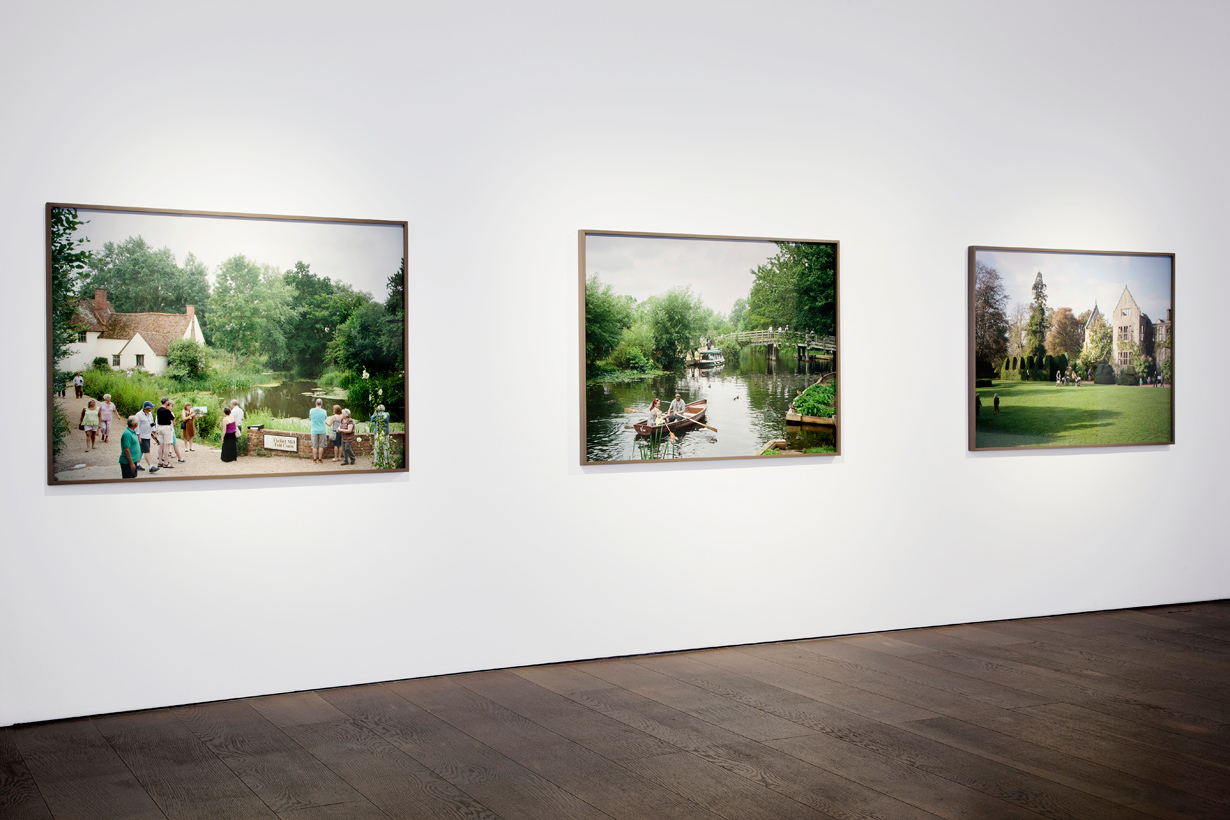
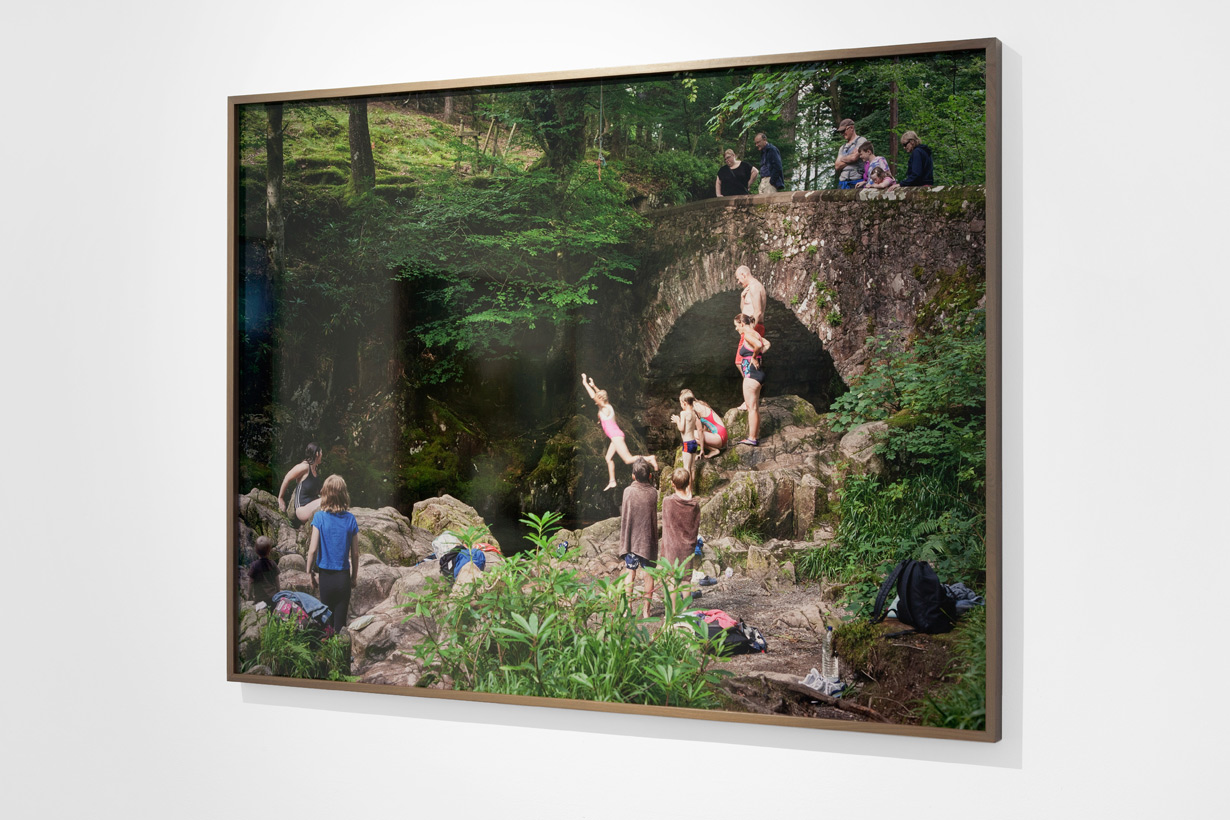
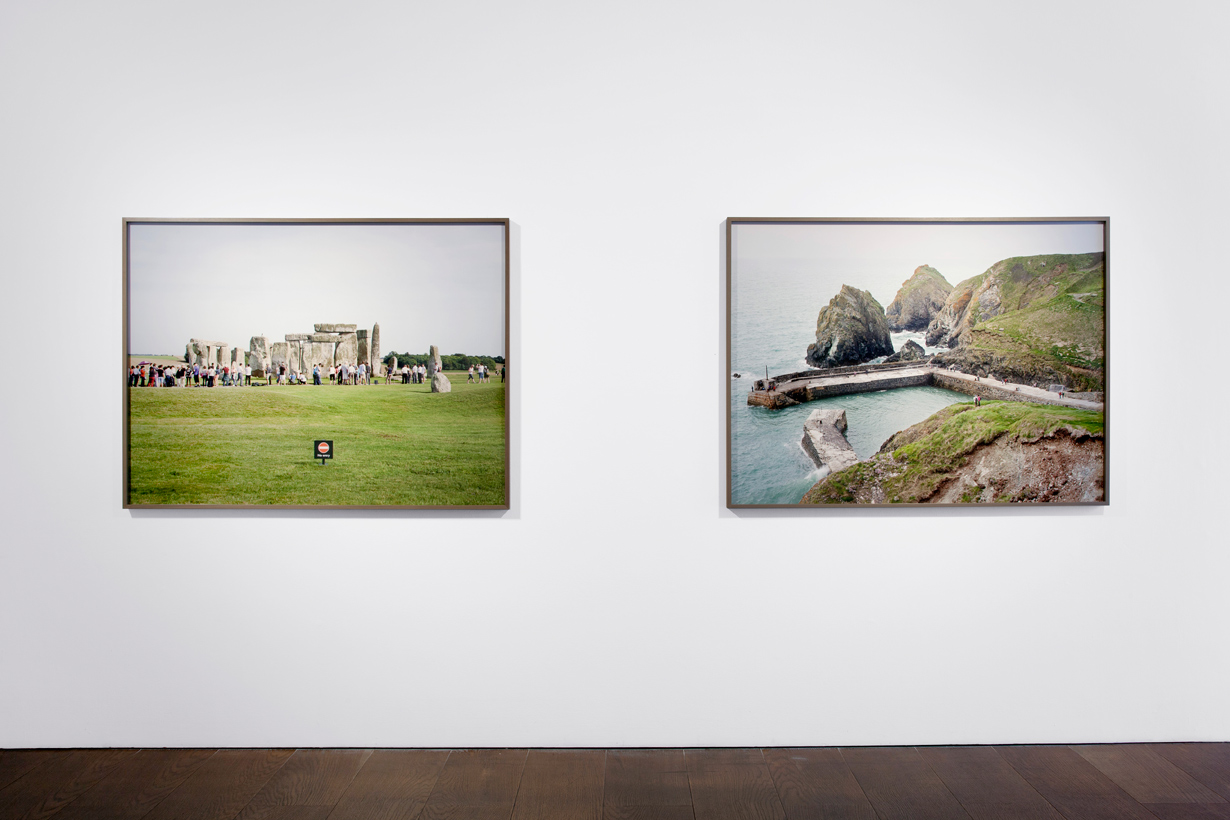
The exhibition runs until 8th August 2015.
Pierdom has been reviewed widely in the press since launching in September.
Here are links to a few:
PhotoEye, “Book Review: Pierdom,” 3 December 2013, Jenkins, Karen. (link)
Hotshoe, “Pierdom book review,” Issue 186 / Winter 2013.
Photography & Architecture, “Pierdom review,” 27 November 2013, Graham, Julie. (link)
Photomonitor, “Pierdom review,” November 2013, Atwell, Oliver. (link)
Slow Wear Journal, “Victorian Remains,” 18 November 2013. (link)
Klat Magazine, “Simon Roberts, Pierdom” 11 November 2013, Severo, Fabio. (link)
Gup Magazine, “Pierdom- Book Review,” 30 September 2013, Giostrelli, Sofia. (link)
Fad, “ART STUFF on a train #21: Pierdom,” 24 September 2013, Carey-Kent, Paul. (link)
One Stop Arts, “Simon Roberts: Pierdom at Flowers Gallery,” 23 September 2013, Harbour, Stacey. (link)
The Telegraph, “Review: Pierdom by Simon Roberts,” 29 October 2013, Newman, Cheryl. (link)
Wallpaper* Magazine, “Top shelf: 10 new books to flick through this autumn,” 28 October 2013, Bell, Jonathan. (link)
Morning Star, “Pier Pressures,” 14 September 2013, Hodgson, Francis.
Independent on Sunday, “Photography book review: Pierdom,” 15 September 2013. (link)
Architects’ Journal, “Welcome the onset of autumn with this seaside exhibition,” 9 September, 2013, Pallister, James. (link)
The Observer, “Pierdom: photography book of the month,” 1 September 2013, O’Hagan, Sean. (link)
Time Magazine Lightbox, “The Victorian Pleasure Piers of a British Summer,” 10 September 2013, Harris, Katie. (link)
BBC News Online, “Britain’s Piers in Focus,” 10 September 2013, Coomes, Phil. (link)
Camden Review, “Art Diary: Sea Here,” 29 August 2013, Smith, Amy. (link)
FT Weekend Magazine , “Piers of the Realm,” 24 August 2013, Hodgson, Francis. (link)
Aesthetica Magazine, “Iconic Britain- Pierdom at Flowers Gallery,” Issue 54 / August – September 2013. (link)
My Star Chambers series is featured in the current issue of Vignette Magazine. You can see the whole issue online here.
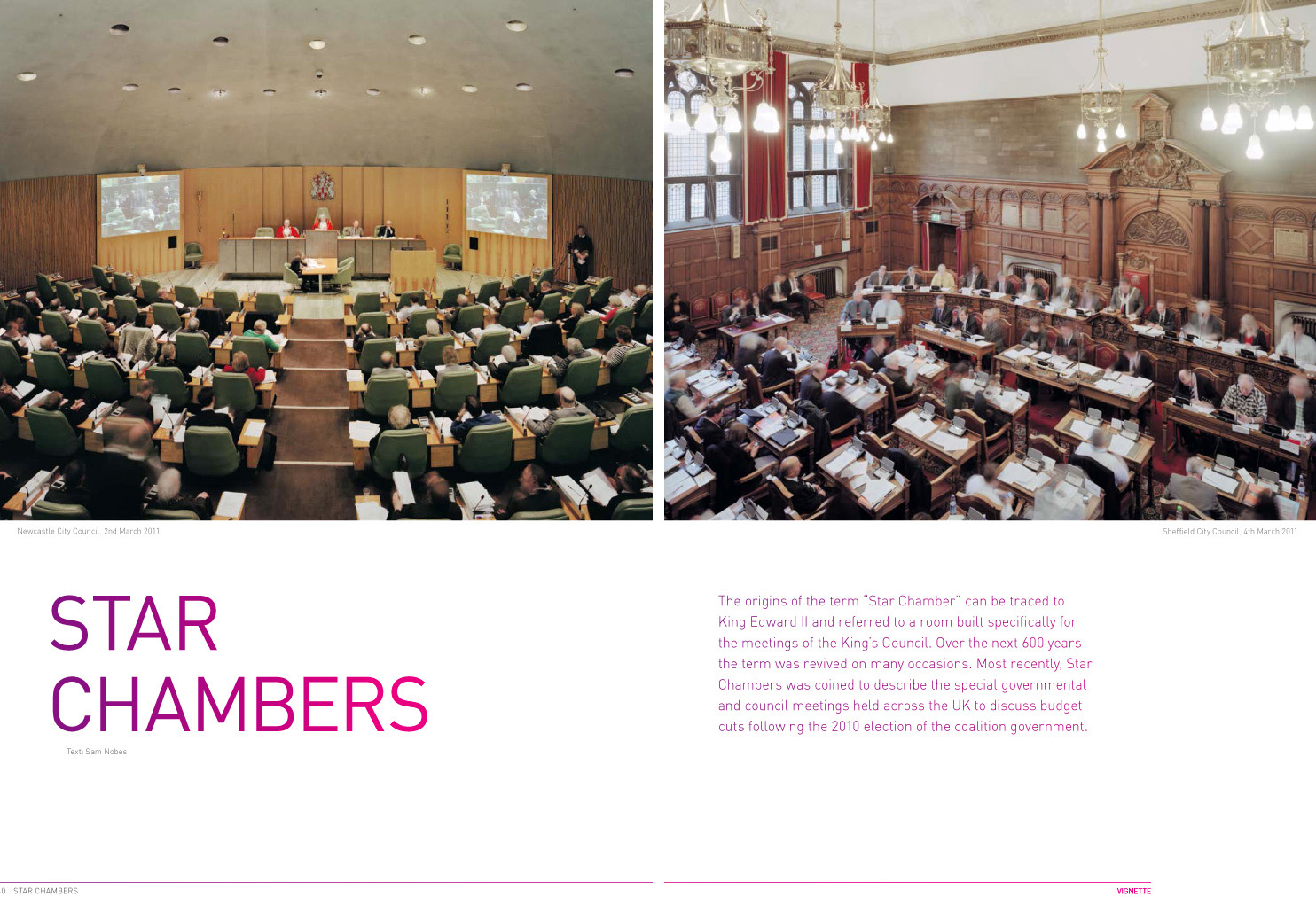
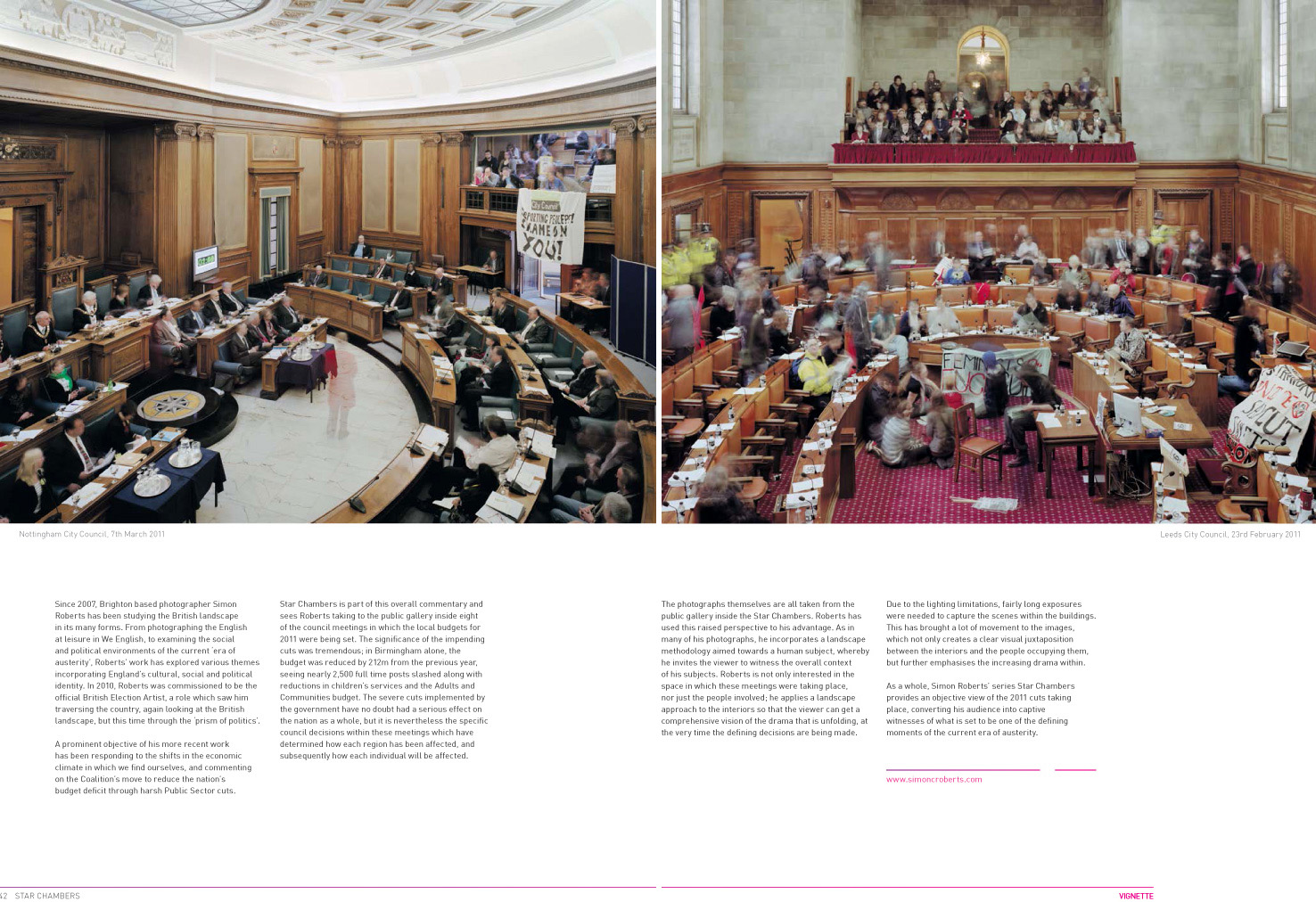
Here is the article by Sam Nobes, which accompanies the piece:
The origins of the term “Star Chamber” can be traced to King Edward II and referred to a room built specifically
for the meetings of the King’s Council. Over the next 600 years the term was revived on many occasions. Most recently, Star Chambers was coined to describe the special governmental and council meetings held across the UK to discuss budget cuts following the 2010 election of the coalition government.
Since 2007, Brighton based photographer Simon Roberts has been studying the British landscape in its many forms. From photographing the English at leisure in We English, to examining the social and political environments of the current ‘era of austerity’, Roberts’ work has explored various themes incorporating England’s cultural, social and political identity.
In 2010, Roberts was commissioned to be the official British Election Artist, a role which saw him traversing the country, again looking at the British landscape, but this time through the ‘prism of politics’. A prominent objective of his more recent work has been responding to the shifts in the economic climate in which we find ourselves, and commenting on the Coalition’s move to reduce the nation’s budget deficit through harsh Public Sector cuts.
Star Chambers is part of this overall commentary and sees Roberts taking to the public gallery inside eight of the council meetings in which the local budgets for 2011 were being set. The significance of the impending cuts was tremendous; in Birmingham alone, the budget was reduced by 212m from the previous year, seeing nearly 2,500 full time posts slashed along with reductions in children’s services and the Adults and Communities budget.
The severe cuts implemented by the government have no doubt had a serious effect on the nation as a whole, but it is nevertheless the specific council decisions within these meetings which have determined how each region has been affected, and subsequently how each individual will be affected.
The photographs themselves are all taken from the public gallery inside the Star Chambers. Roberts has used this raised perspective to his advantage. As in many of his photographs, he incorporates a landscape methodology aimed towards a human subject, whereby he invites the viewer to witness the overall context of his subjects. Roberts is not only interested in the space in which these meetings were taking place, nor just the people involved; he applies a landscape approach to the interiors so that the viewer can get a comprehensive vision of the drama that is unfolding, at the very time the defining decisions are being made.
Due to the lighting limitations, fairly long exposures were needed to capture the scenes within the buildings. This has brought a lot of movement to the images, which not only creates a clear visual juxtaposition between the interiors and the people occupying them, but further emphasises the increasing drama within.
As a whole, Simon Roberts’ series Star Chambers provides an objective view of the 2011 cuts taking place, converting his audience into captive witnesses of what is set to be one of the defining moments of the current era of austerity.